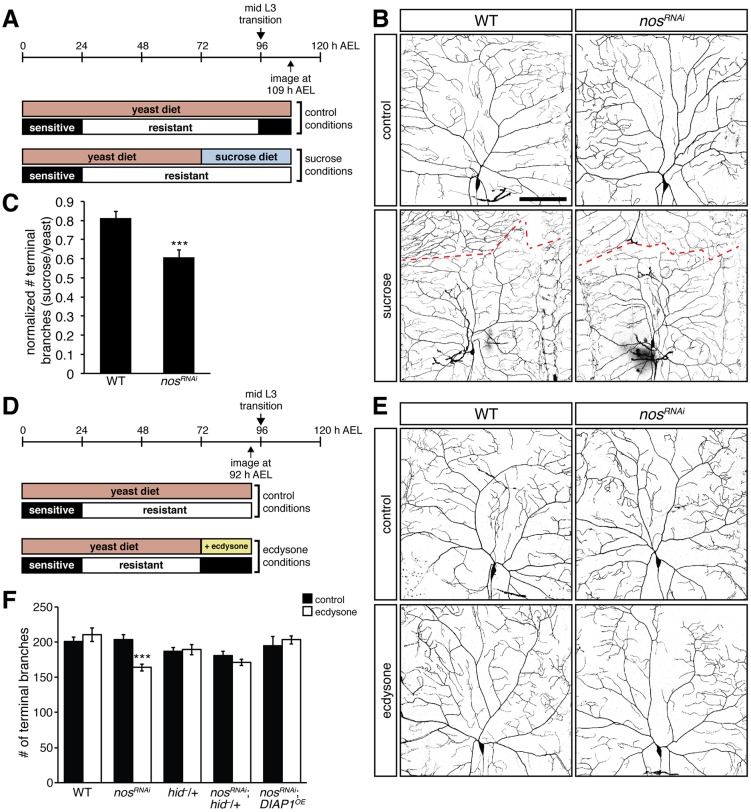Fig. 6.
The requirement for nos depends on ecdysone signaling at the mid-L3 transition. (A) Timeline shows development from egg deposition (0 h) to 120 h AEL and sensitivity or resistance to caspases. Larvae were fed a yeast diet until the beginning of the L3 stage (72 h AEL), then were either kept on yeast or transferred to a sugar-only diet. Neurons were imaged at 109 h AEL. (B) Confocal z-series projections of representative class IV da neurons in wild-type (WT) and nosRNAi larvae from the experiment shown in A. Dashed line shows the boundary of the neuron from the contralateral neuron. (C) Normalized dendritic terminal branch number in WT and nosRNAi larvae treated with a sugar-only or yeast diet. (D) Larvae were fed yeast until the beginning of the L3 stage, then either kept on yeast or transferred to yeast containing ecdysone. Neurons were imaged at 92 h AEL, prior to the mid-L3 transition. (E) Class IV da neurons in WT and nosRNAi larvae from the experiment shown in D. (F) Quantification of the dendritic terminal branch number. UAS-nosRNAi, UAS-DIAP1, and UAS-CD4-GFP were expressed using GAL4477. Values in C,F are mean±s.e.m., n≥10 for each genotype; ***P≤0.001. Scale bar: 100 μm.

